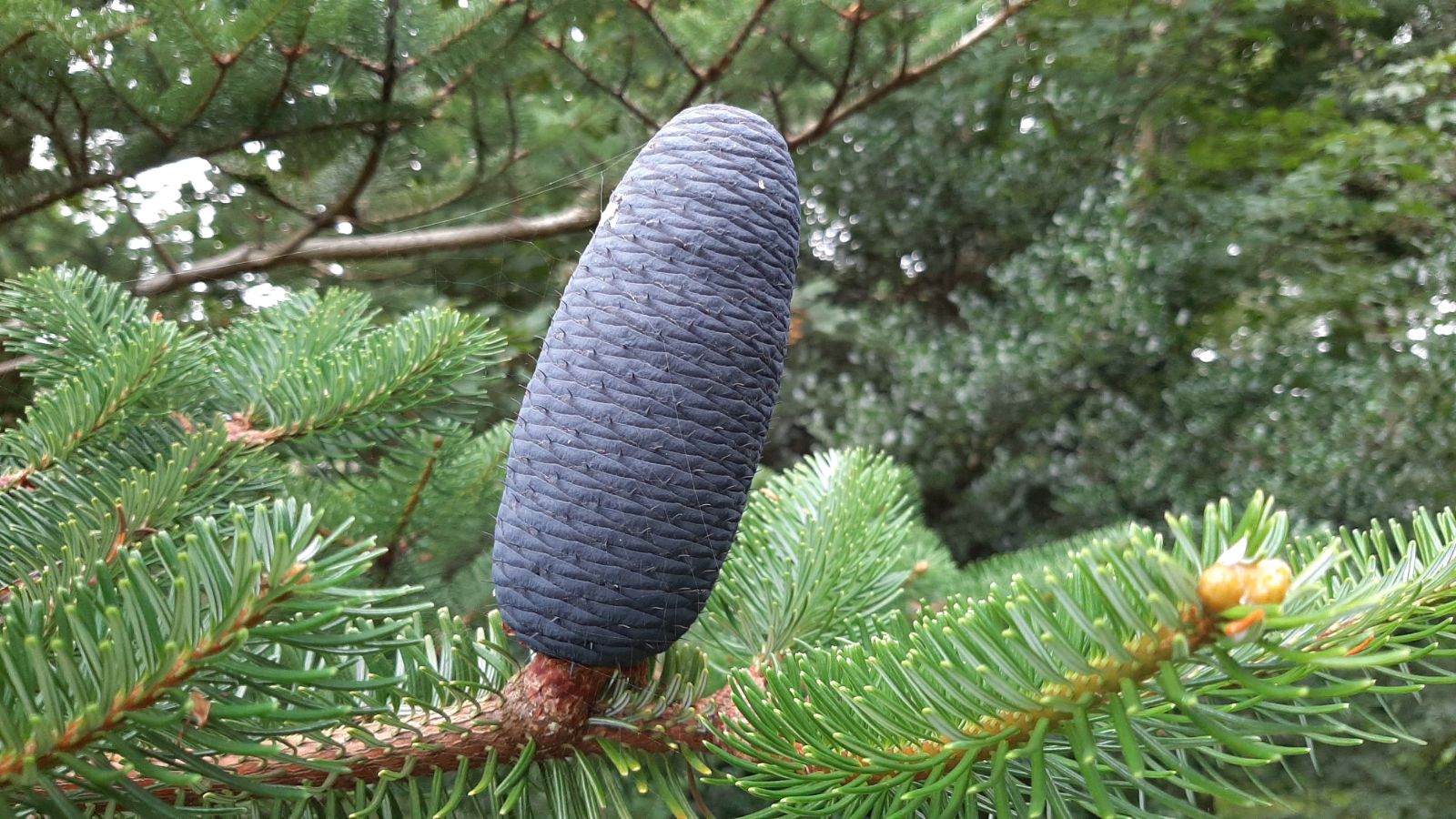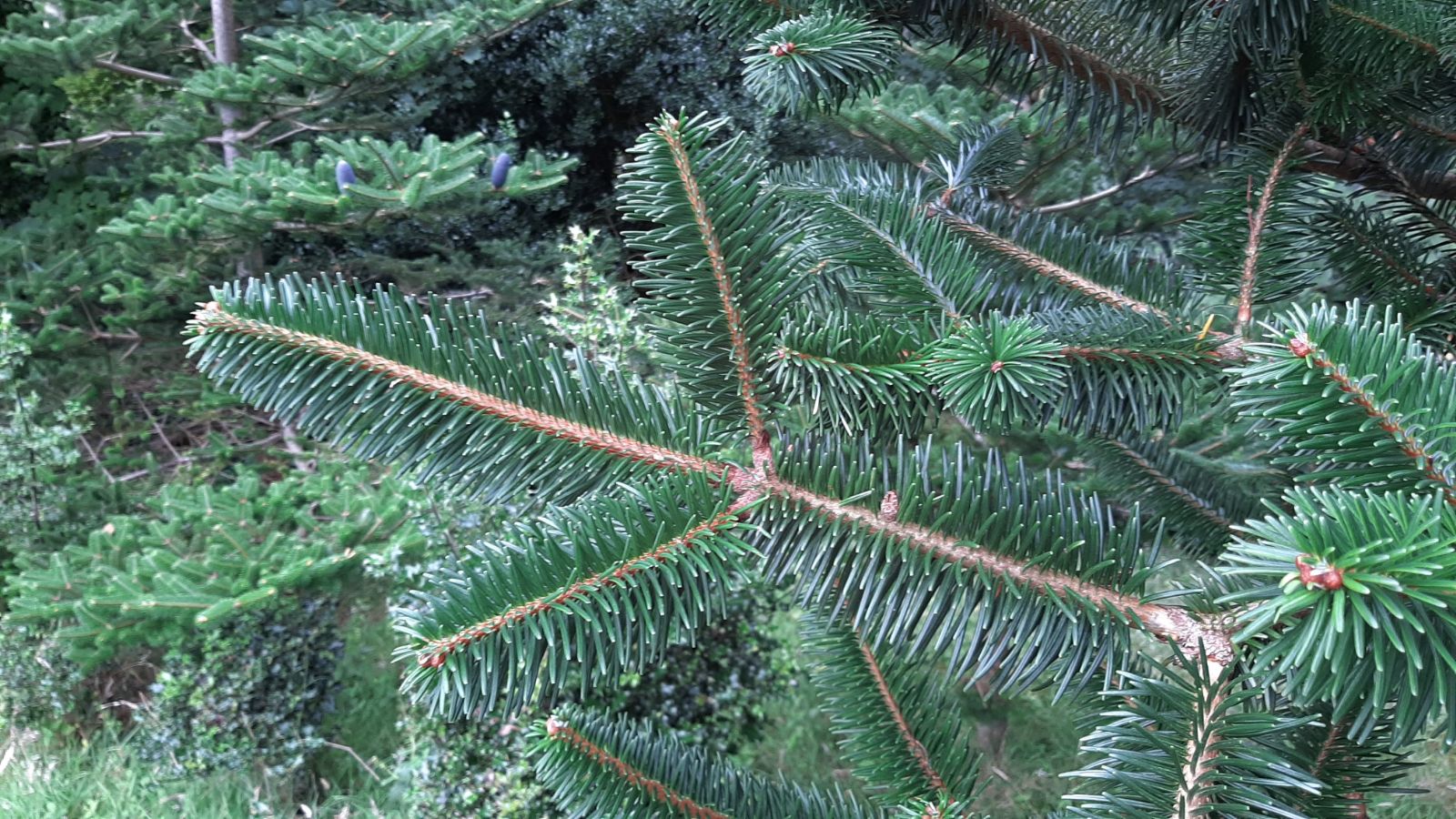Abies nukiangensis
Sponsor
Kindly sponsored by
Sir Henry Angest
Credits
Tom Christian (2021)
Recommended citation
Christian, T. (2021), 'Abies nukiangensis' from the website Trees and Shrubs Online (treesandshrubsonline.
Genus
Common Names
- Nukiang Fir
Synonyms
- Abies delavayi var. nukiangensis (W.C. Cheng & L.K. Fu) Farjon & Silba
- Abies delavayi subsp. nukiangensis (W.C. Cheng & L.K. Fu) Silba
Other taxa in genus
- Abies alba
- Abies amabilis
- Abies × arnoldiana
- Abies balsamea
- Abies beshanzuensis
- Abies borisii-regis
- Abies bracteata
- Abies cephalonica
- Abies × chengii
- Abies chensiensis
- Abies cilicica
- Abies colimensis
- Abies concolor
- Abies delavayi
- Abies densa
- Abies durangensis
- Abies ernestii
- Abies fabri
- Abies fanjingshanensis
- Abies fansipanensis
- Abies fargesii
- Abies ferreana
- Abies firma
- Abies flinckii
- Abies fordei
- Abies forrestii
- Abies forrestii agg. × homolepis
- Abies fraseri
- Abies gamblei
- Abies georgei
- Abies gracilis
- Abies grandis
- Abies guatemalensis
- Abies hickelii
- Abies holophylla
- Abies homolepis
- Abies in Mexico and Mesoamerica
- Abies in the Sino-Himalaya
- Abies × insignis
- Abies kawakamii
- Abies koreana
- Abies koreana Hybrids
- Abies lasiocarpa
- Abies magnifica
- Abies mariesii
- Abies nebrodensis
- Abies nephrolepis
- Abies nordmanniana
- Abies numidica
- Abies pindrow
- Abies pinsapo
- Abies procera
- Abies recurvata
- Abies religiosa
- Abies sachalinensis
- Abies salouenensis
- Abies sibirica
- Abies spectabilis
- Abies squamata
- Abies × umbellata
- Abies veitchii
- Abies vejarii
- Abies × vilmorinii
- Abies yuanbaoshanensis
- Abies ziyuanensis
Tree 20–30 m × 1–1.5 m dbh. Crown pyramidal in young trees, broad-pyramidal later, old trees flat-topped. Bark reddish-brown and smooth at first, deeply fissured with age, breaking into irregular plates. First order branches spreading horizontally, slightly descending with age; second order branches horizontal or assurgent. Branchlets stout, assurgent, reddish- or purplish-brown maturing grey-brown then grey, weakly ridged at first, soon smooth, pubescent at least in their first year. Vegetative buds ovoid-globular, small and resinous except on leading shoots. Needles radially outspreading, those of the upper rank ~vertical or slightly backswept, 1.2–4.3 cm × 1.5–2.8 mm, base twisted, margins weakly revolute (cf. A. delavayi, A. fansipanensis), apex emarginate, glossy dark green above with two chalk-white stomatal bands beneath. Pollen cones 2–4 cm long. Seed cones cylindrical, apex abruptly obtuse, 7–10(–14) cm × 3–4.5 cm, dark indigo-blue at first, maturing purplish-black or blackish-brown; seed scales 1.7–2 × 1.8–2.2 cm; bracts with a short cusp to 2 mm, mostly included or slightly exserted near the base. Rachis thick, conical-fusiform, purplish-brown. (Farjon 2017; Fu et al. 1999; Cheng, Fu & Cheng 1975).
Distribution Myanmar North and northeastern areas China SW Sichuan (?), NW Yunnan India Arunchal Pradesh (?)
Habitat Temperate forests at 2500–3100 m asl, characterised by cool summers and abundant precipitation.
USDA Hardiness Zone 7-8
RHS Hardiness Rating H6
Conservation status Near threatened (NT)
Taxonomic note Farjon (1990; 2017) states that the shoots of this species are glabrous; they are actually pubescent, as stated in the original description (Cheng, Fu & Cheng 1975) and more recently in the Flora of China (Fu, Li & Mill 1999).
Cheng and Fu described A. nukiangensis in 1975. Farjon and Silba reduced it to varietal status under A. delavayi in 1990 (Farjon 1990) and this is how it is usually labelled in collections; it is clearly closely related to Delavay Fir, but treated as a distinct species here following the Flora of China (Fu, Li & Mill 1999) and others. The most reliable means of distinguishing it is probably by the mature seed cones; these differ from A. delavayi in having more or less included bracts at maturity, or else the tips only shortly exserted. Indeed, in this character it is closer to A. fansipanensis, but that taxon has fully included bracts and more strongly revolute needle margins.
A. nukiangensis was probably first introduced by George Forrest, who collected it on the western flank of the Shweli-Salween divide in western Yunnan, close to the border with Myanmar, under F 9340. Trees from this gathering grew at Westonbirt, and may persist in one or two other locations, or as grafts. More recent gatherings from the same area include KR 7541, but it remains a very rare species in cultivation. Several of the best young examples grow at Tregrehan, Conrwall, where Tom Hudson has planted a stand of six trees which are establishing well. One of these was coning when examined in 2021, and had the short-exserted bracts that help to differentiate this species from A. delavayi (pers. obs.).
KR 2666 provides ample evidence as to the danger of attempting to classify material too precisely when only vegetative characters are available. Collected in 1993 from an exposed ridge at over 3000 m altitude on the Mekong-Salween divide, it is represented by several plants in UK gardens as well as by a voucher herbarium specimen in Edinburgh. The specimen from the parent tree shows needles not exceeding 2.5 cm and with strongly revolute margins (E00073608), but the resulting plants at Hergest Croft and the Howick Arboretum have long needles with the margins revolute but not strongly so (pers. obs. 2020). Based on these characters alone, cultivated trees err closer to descriptions of A. nukiangensis, but the associated herbarium specimen better fits A. delavayi. The deciding factor is in the cone bracts, which no young trees have yet produced; the specimen label says that these were exserted on the parent trees, but the extent of exsertion was not noted. Until these young trees produce cones their precise identity remains unconfirmed and they are best labelled A. aff. delavayi.
An ostensibly genuine plant of A. nukiangensis grows at Westonbirt Arboretum, UK, descended from Kingdon-Ward 21008. In 2014 it was 17 m × 0.4 m dbh (Tree Register 2020). Grafts from other trees of the same collection grows in several UK arboreta. The 2000 Gaoligong Shan Expedition collected this species for the herbarium, but not as living material.



